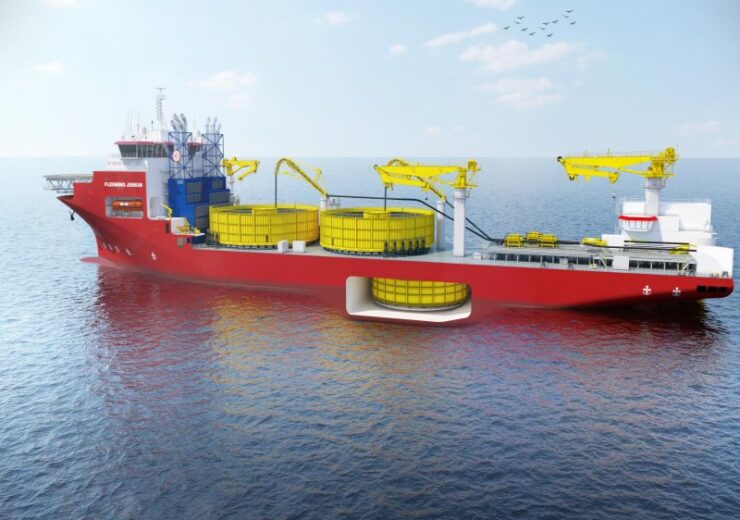This interconnector will be capable of transporting more than 2GW of solar and wind power through a roughly 1,000 km-long undersea power cable

Cable-laying vessel Fleeming Jenkin. (Credit: © Jan De Nul)
The Egyptian government, through the Egyptian Electricity Transmission Company (EETC), has entered a significant agreement with Jan De Nul Group to initiate a comprehensive study for the development of an undersea export cable connecting Egypt and Europe.
In late September, the Egyptian government reiterated its commitment to constructing an undersea electricity cable linking Egypt to Europe. The purpose is to facilitate the transmission of electricity generated from Egyptian solar and wind installations to the broader European energy market.
This interconnector will convey over 2GW of solar and wind power through a roughly 1,000km-long undersea power cable. For context, the current longest interconnector cable, connecting Denmark and Britain, measures 765km. Adding to the complexity, the water depths along the cable route reach up to 3,000m.
The Jan De Nul Group is tasked with conducting a comprehensive financial and technical study. The ultimate goal is not only to assess the feasibility but also to actively participate in the development of this ambitious export project. The study encompasses aspects such as project financing, green power generation, installation and production of transmission systems, including cables, and the identification of partners to integrate with existing grids in Europe.
Jan De Nul Offshore Energy director Philippe Hutse said: “We are extremely happy with the conclusion of this agreement. Egypt recognises our expertise to install ever longer export cables on and in the seabed.
“We recently ordered a new next-generation cable installation vessel, the Fleeming Jenkin, which is twice the size of any existing cable-laying vessel in the world. We are building this ship for exactly this type of project: long distances, great depths. Something in which we absolutely stand out within the cable installation market. Egypt is clearly a pioneer in energy transition for the African continent and we look forward to supporting it in this.”
The commencement of the actual project execution is slated for the year 2027.
